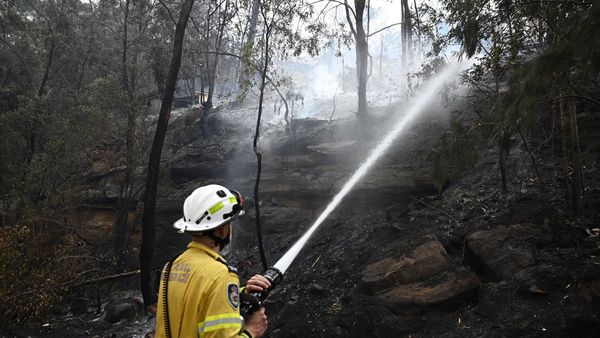
The Alaska coast was bracing for more rain and wind on Wednesday after a devastating storm decimated two small native villages, killing at least one person and displacing more than 1,500 people.
Over the weekend, the remnants of Typhoon Halong hit remote communities in the Yukon-Kuskokwim Delta, in the south-western part of the state, bringing fierce winds, rain and record-breaking storm surge that caused some homes to float away.
The Coast Guard rescued two dozen people from their homes after the structures floated out to sea. At least one person was killed and two were missing. The hardest-hit communities included Kipnuk, population 715, and Kwigillingok, population 380, where the storm damaged every single home.
“It’s catastrophic in Kipnuk. Let’s not paint any other picture,” Mark Roberts, an incident commander with the state emergency management division, said during a news conference on Tuesday. “We are doing everything we can to continue to support that community, but it is as bad as you can think.”
Officials are still scrambling to shelter those displaced by the storm. Hundreds of people were staying in school shelters, where toilet access and power have been limited. State authorities have acknowledged people are “miserable” and said they are moving as fast as they can.
“We need to have places for people to go safely, where they can be warm and fed and taken care of. We’re moving quickly to have that established, but it’s taking some time,” Roberts told Alaska Public Radio.
Across the region, more than 1,500 people were displaced. Dozens were flown to a shelter set up in the national guard armory in the regional hub city of Bethel, a community of 6,000 people, and officials were considering flying evacuees to longer-term shelter or emergency housing in Fairbanks and Anchorage.
Among those awaiting evacuation to Bethel on Tuesday was Brea Paul, of Kipnuk, who said in a text message that she had seen about 20 homes floating away through the moonlight on Saturday night.
“Some houses would blink their phone lights at us like they were asking for help but we couldn’t even do anything,” she wrote.
The following morning, she recorded video of a house submerged nearly to its roofline as it floated past her home.
Paul and her neighbors had a long meeting in the local school gym on Monday night. They sang songs as they tried to figure out what to do next, she said. Paul wasn’t sure where she would go.
“It’s so heartbreaking saying goodbye to our community members not knowing when we’d get to see each other,” she said.
About 30 miles (48km) away in Kwigillingok, Ella Mae Kashatok, 67, was found dead and authorities on Monday night called off the search for two men whose home floated away after what they described as a “robust and extensive search” with drones, boats and aircraft.
“This is not a decision any of us ever wanted to make,” Austin McDaniel, a spokesperson for the Alaska state troopers, told the Anchorage Daily News. “It comes after a careful evaluation of all of the available information and the available resources.”
In Kwigillingok this week, the school was the only facility in town with full power, but it had no working toilet and 400 people stayed there on Monday night. Workers were trying to fix the bathrooms; a situation report from the state emergency operations center on Tuesday noted that portable toilets, or “honey buckets”, were being used.
A preliminary assessment showed every home in the village was damaged by the storm, with about three dozen having drifted from their foundations, the emergency management office said.
Power systems flooded in Napakiak, and severe erosion was reported in Toksook Bay. In Nightmute, officials said fuel drums were reported floating in the community, and there was a scent of fuel in the air and a sheen on the water.
The national guard was activated to help with the emergency response, and crews were trying to take advantage of any breaks in the weather to fly in food, water, generators and communication equipment.
Officials warned of a long road to recovery and a need for continued support for the hardest-hit communities. Most rebuilding supplies would have to be transported in and there is little time left with winter just around the corner, and communities accessible only by water or air.
“Indigenous communities in Alaska are resilient,” said Rick Thoman, an Alaska climate specialist at the University of Alaska Fairbanks. “But, you know, when you have an entire community where effectively every house is damaged and many of them will be uninhabitable with winter knocking at the door now, there’s only so much that any individual or any small community can do.”
Thoman said the storm was probably fueled by the warm surface waters of the Pacific Ocean, which has been heating up because of human-caused climate change and making storms more intense.







